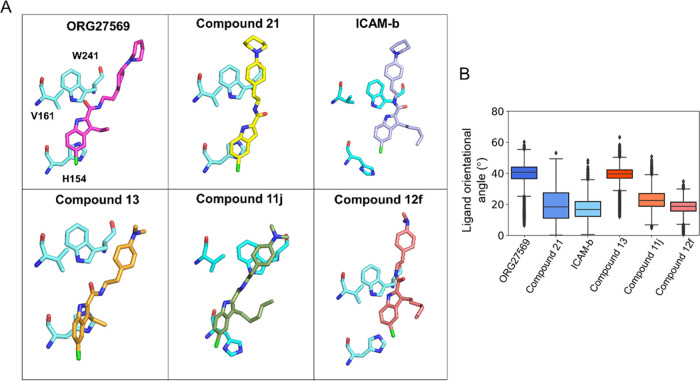Figure 9.
Preferred orientations of ORG27569 and its analogs at the transmembrane allosteric binding site. (A) Orientation of ligands with respect to three critical binding site residues, H1542.41, V1612.48, and W2414.50, reveals the differences in the molecular interactions with protein residues and the surrounding membrane lipids. Most importantly, compounds with long alkyl substitutions at position C-3 are oriented such that their alkyl groups point toward the membrane lipids, affecting the overall orientation of the ligands. (B) Boxplot shows the orientational angle of each ligand through the entire simulation time that was quantified as a tilt angle between the bilayer normal (z-axis) and the vector, connecting the two ends of the ligand as depicted in Figure S5B (chlorine atom at one end and the farthest aromatic carbon atom on the piperidine ring or the nitrogen of the dimethylamino group at the other end). The N-piperidinyl and dimethylamino analogs are shown in blue and red colors, respectively.

